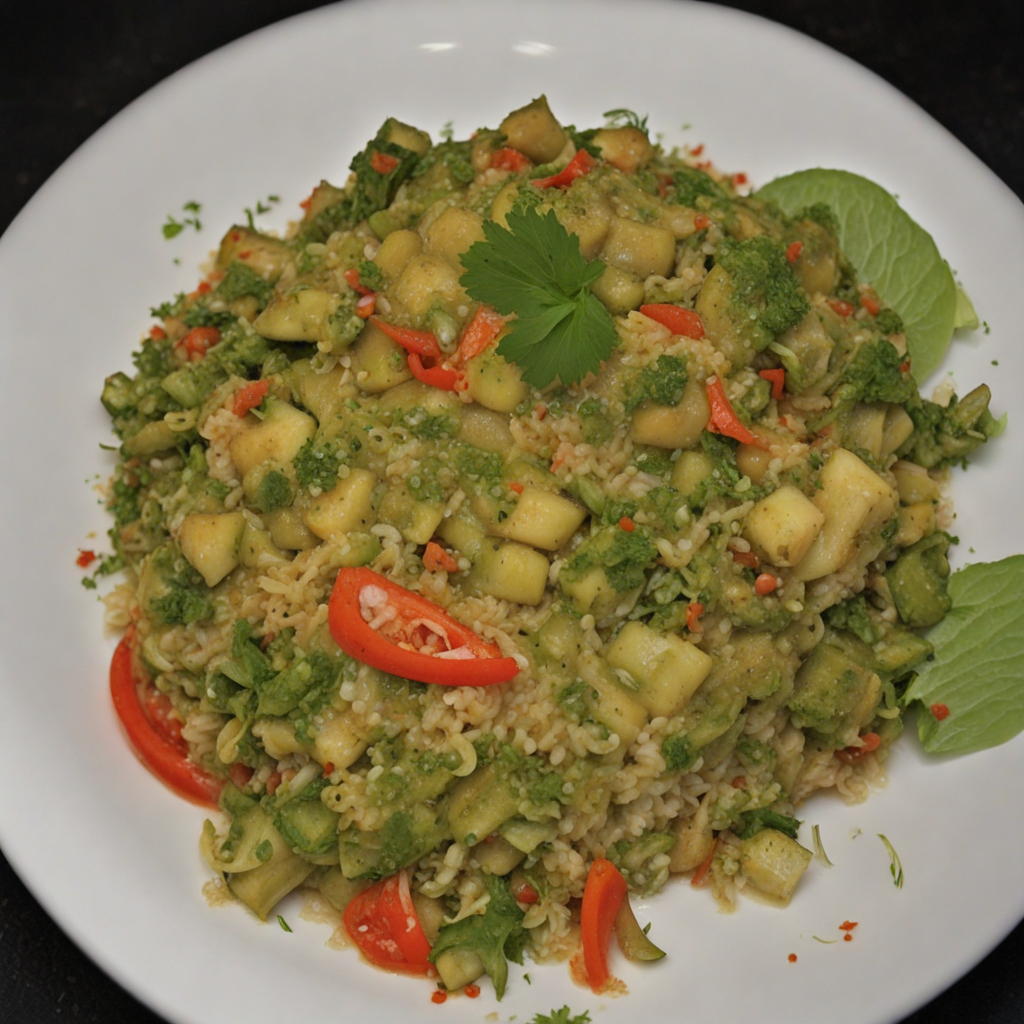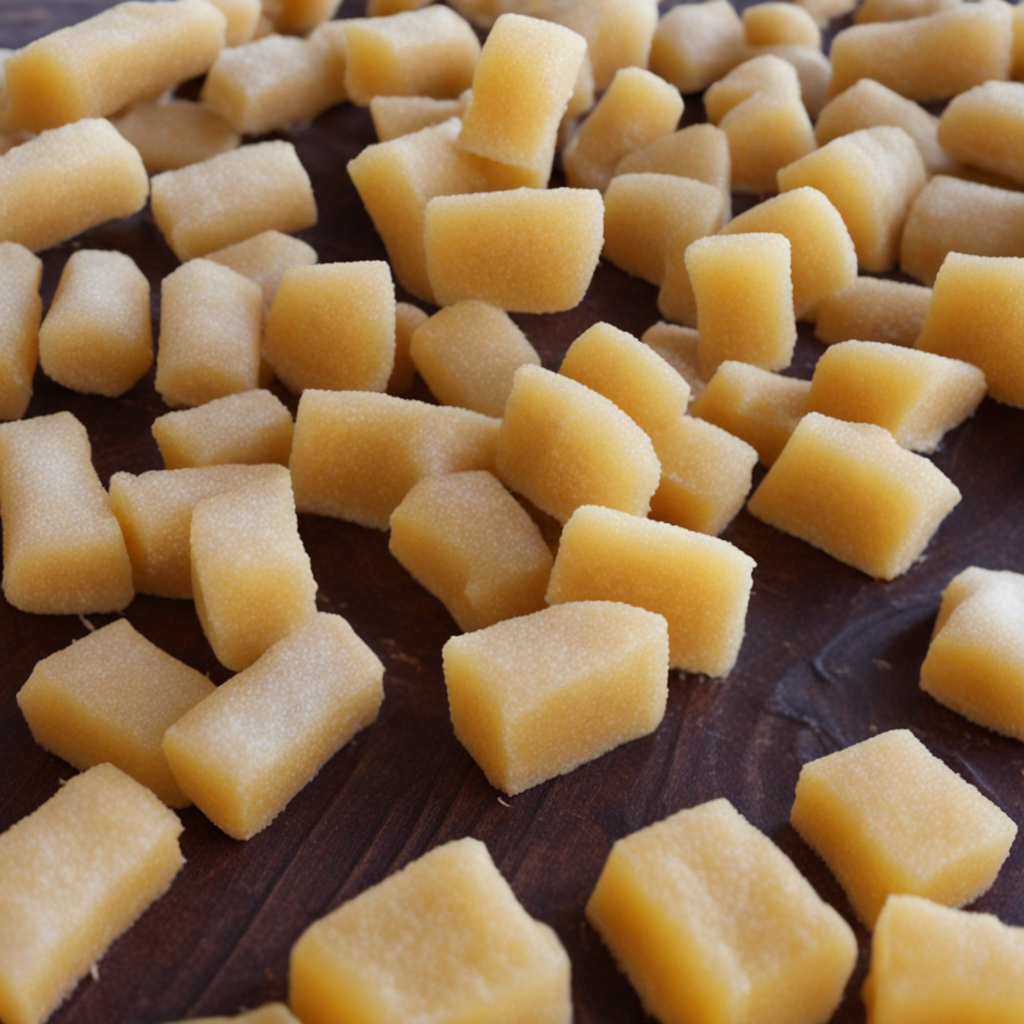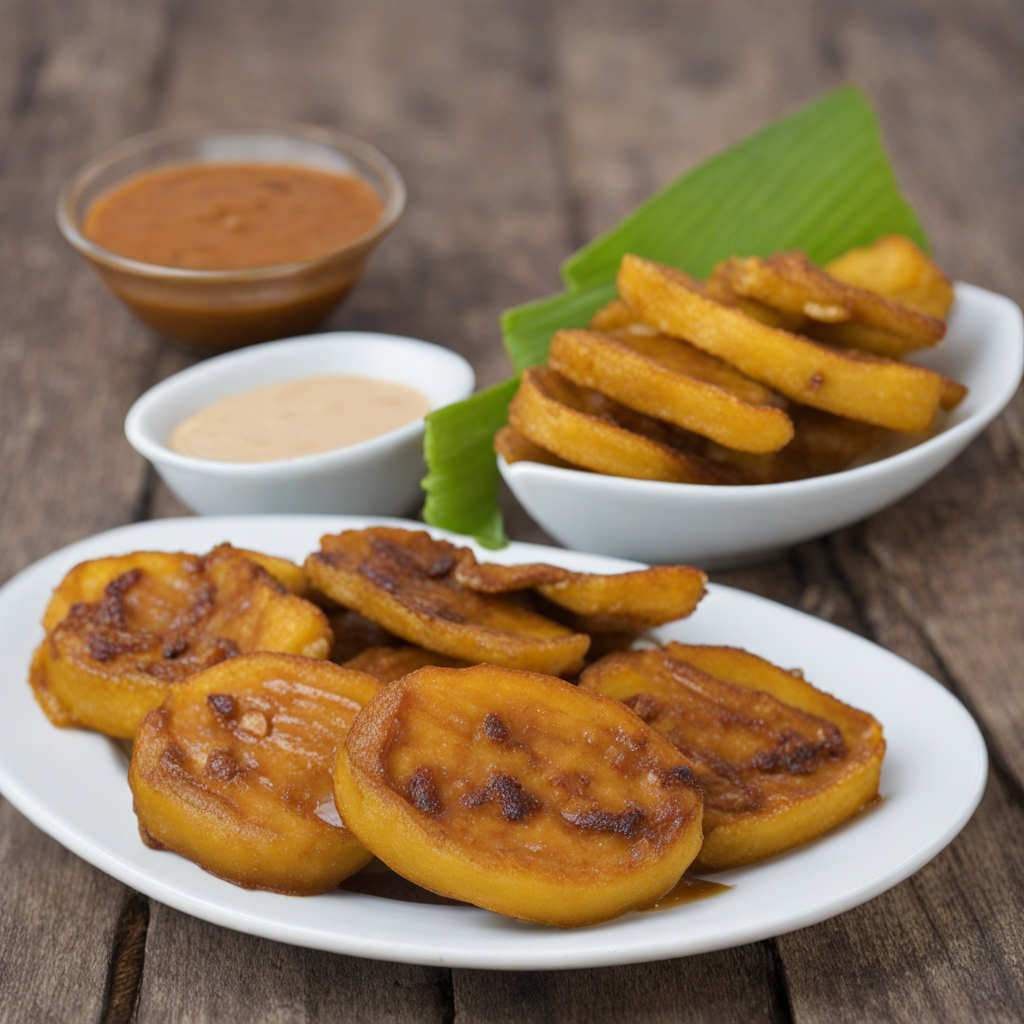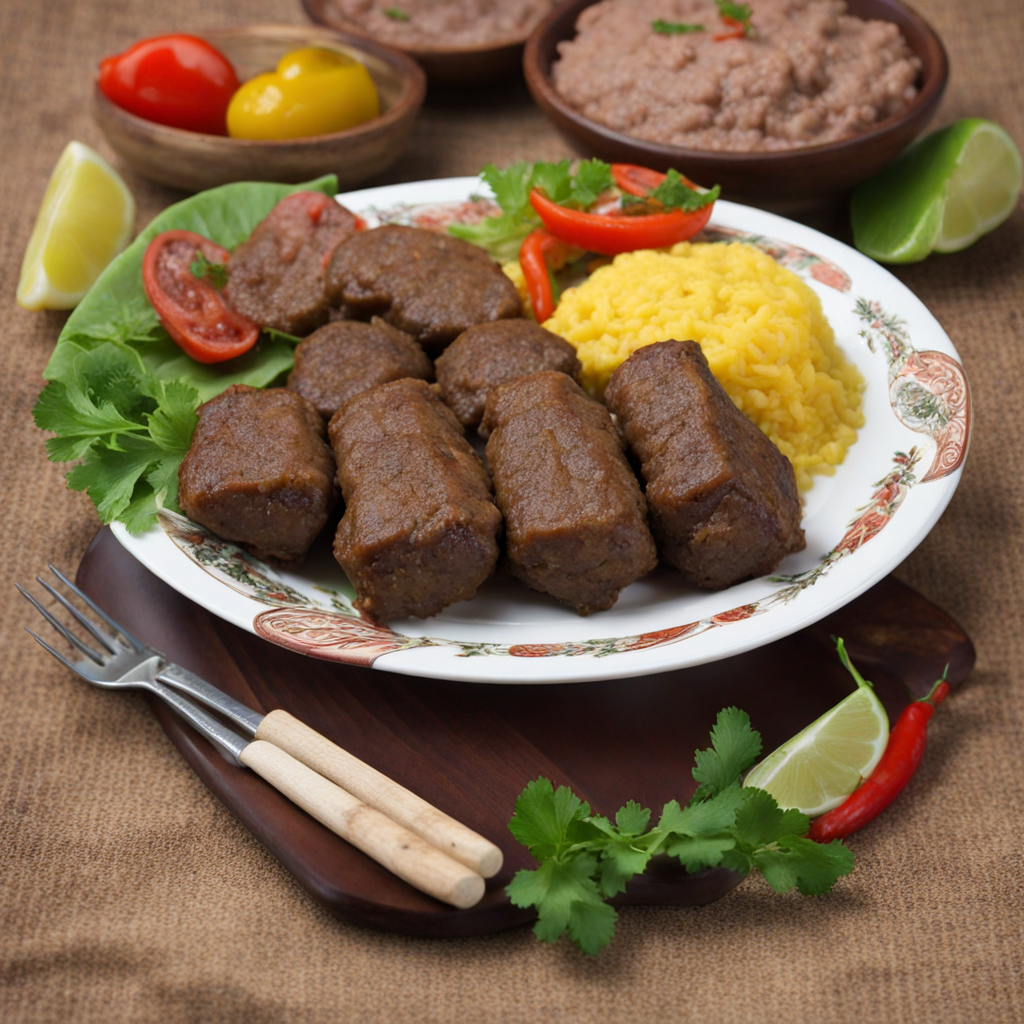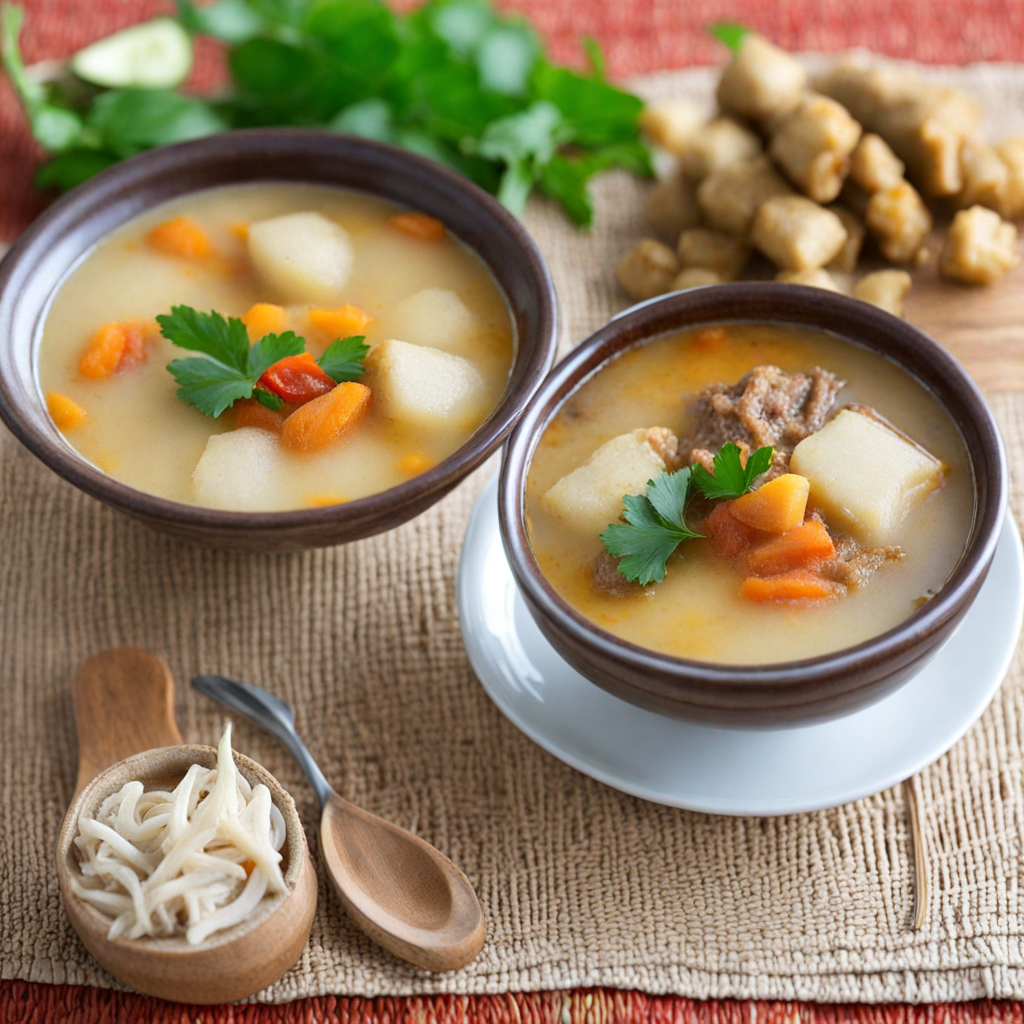Goedangan
Goedangan is a delightful Surinamese dish that showcases the rich culinary influences of the country's diverse cultural heritage. At its core, Goedangan is a vibrant salad made primarily from a mix of fresh vegetables, such as cabbage, carrots, and green beans, combined with a medley of spices that infuse the dish with a unique flavor profile. The vegetables are typically finely shredded or chopped, creating a refreshing and crunchy texture that is both satisfying and nutritious. What sets Goedangan apart is its signature dressing, which often includes a blend of peanut butter, vinegar, and spices that creates a creamy yet tangy finish. This dressing not only enhances the taste of the vegetables but also adds a rich depth that is reminiscent of other Southeast Asian flavors. The combination of the crunchy vegetables and the smooth, savory dressing makes for a delightful contrast that excites the palate, making it a popular choice among locals and visitors alike. Additionally, Goedangan is often served as a side dish, accompanying various main courses, or enjoyed on its own as a light meal. The dish is commonly garnished with crispy fried onions or peanuts, adding an extra layer of texture and flavor. Whether you're enjoying it at a family gathering or a street food stall in Suriname, Goedangan is a must-try for anyone looking to explore the vibrant tastes of this culturally rich country.
How It Became This Dish
The History of Goedangan: A Culinary Gem of Suriname Origins Goedangan is a traditional dish that embodies the rich cultural tapestry of Suriname, a small but diverse nation on the northeastern coast of South America. The roots of Goedangan can be traced back to the indigenous peoples of the region, who relied on local ingredients and traditional cooking methods. The very name "Goedangan," which translates to "good food" in the Sranan Tongo language, reflects the dish's significance as a staple in Surinamese households. While the indigenous influence is undeniable, Goedangan has also been shaped by the various waves of migration that have occurred throughout Suriname's history. The country, once a Dutch colony, has welcomed African slaves, indentured servants from India and Java, and immigrants from China and the Middle East. Each group brought their culinary traditions, creating a unique fusion that is evident in Goedangan. Cultural Significance Goedangan is more than just a meal; it is a symbol of Surinamese identity, representing the blending of cultures and the communal aspect of dining. Traditionally, Goedangan is served during family gatherings, celebrations, and festivals, acting as a centerpiece that brings people together. The dish often features a variety of vegetables and proteins, usually incorporating seasonal and locally sourced ingredients, which highlights the importance of sustainability in Surinamese culinary practices. The communal nature of Goedangan is particularly noteworthy. In Surinamese culture, food is often prepared in large quantities, encouraging sharing and fostering community bonds. Families often gather to prepare the dish together, passing down recipes and cooking techniques from one generation to the next. This ritual not only strengthens family ties but also ensures the preservation of cultural heritage. Ingredients and Preparation The core ingredients of Goedangan typically include a mix of vegetables such as cassava, green beans, carrots, and cabbage, often accompanied by a protein source like fish or chicken. The dish is characterized by its rich, flavorful seasoning, which includes a blend of spices and herbs that reflect the diverse culinary influences in Suriname. Coconut milk is commonly used to add creaminess and depth, while elements like shrimp paste, garlic, and chili contribute to the dish's unique flavor profile. Preparing Goedangan is a labor of love. It begins with the careful selection of fresh ingredients, often sourced from local markets. The vegetables are chopped and cooked together with the protein, allowing the flavors to meld. The addition of coconut milk and spices elevates the dish, creating a harmonious balance of taste and texture. The result is a colorful and aromatic meal that captures the essence of Surinamese cuisine. Development Over Time The evolution of Goedangan has paralleled the changing social and economic landscape of Suriname. In the early 20th century, as more immigrants arrived and settled in the region, the dish began to incorporate additional elements from various culinary traditions. For instance, the Indonesian influence became more pronounced, leading to the inclusion of ingredients like tempeh and tofu, which are now common in modern interpretations of Goedangan. With the advent of globalization and the rise of the internet, the popularity of Goedangan has expanded beyond Suriname. Surinamese communities around the world have started to share their love for Goedangan, introducing the dish to new audiences. Social media platforms and food blogs have played a crucial role in showcasing traditional recipes and encouraging home cooks to experiment with their variations of Goedangan. In contemporary Surinamese society, Goedangan has also adapted to modern dietary preferences. Vegetarian and vegan versions of the dish have emerged, catering to a growing demand for plant-based options. These adaptations maintain the essence of Goedangan while embracing a more health-conscious approach to cooking. Goedangan in the Modern Context Today, Goedangan is not only a beloved dish within Suriname but also a point of pride for the Surinamese diaspora. Food festivals and cultural events often feature Goedangan as a highlight, allowing people to celebrate their heritage and share their culinary skills with others. Restaurants specializing in Surinamese cuisine have also sprung up globally, showcasing Goedangan alongside other traditional dishes. Moreover, the dish has become a canvas for culinary innovation. Chefs are experimenting with fusion techniques, combining Goedangan with elements from other cuisines to create unique interpretations. For example, some have incorporated Asian flavors or Latin American ingredients, resulting in a dynamic and evolving culinary experience that reflects the ongoing dialogue between tradition and modernity. Conclusion Goedangan is a testament to the rich history and cultural diversity of Suriname. Its origins are deeply rooted in the indigenous practices of the region, while its development has been shaped by generations of migration and intercultural exchange. Today, Goedangan stands as a symbol of community, family, and the enduring legacy of Surinamese culinary traditions. As the world continues to globalize and cultures intermingle, Goedangan remains a cherished dish that connects people to their heritage. Whether enjoyed in a family home in Paramaribo or a restaurant in Amsterdam, Goedangan serves as a delicious reminder of the power of food to bring people together, celebrate diversity, and preserve cultural identity. As culinary enthusiasts and home cooks alike embrace this dish, the legacy of Goedangan will undoubtedly continue to flourish for generations to come.
You may like
Discover local flavors from Suriname



